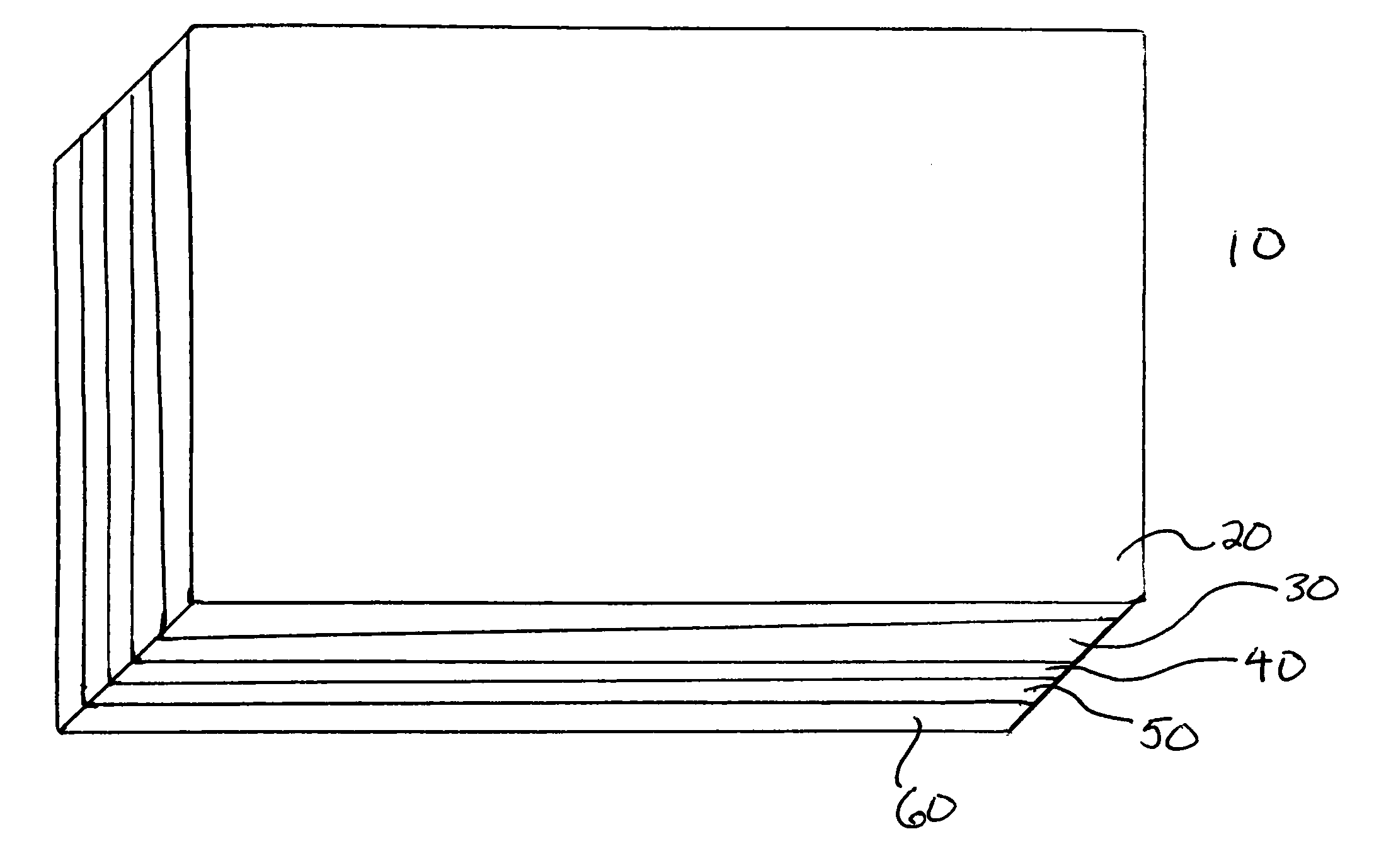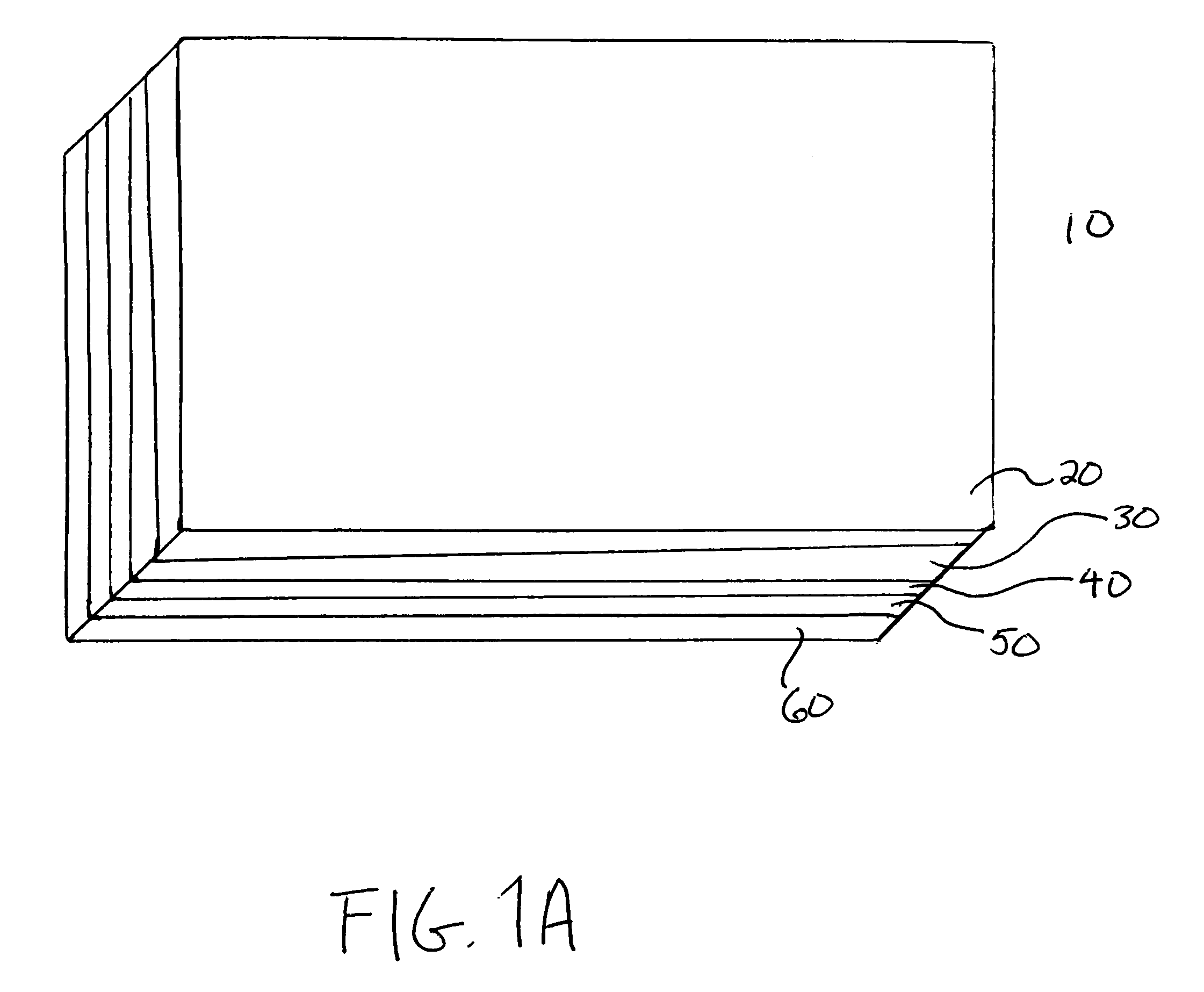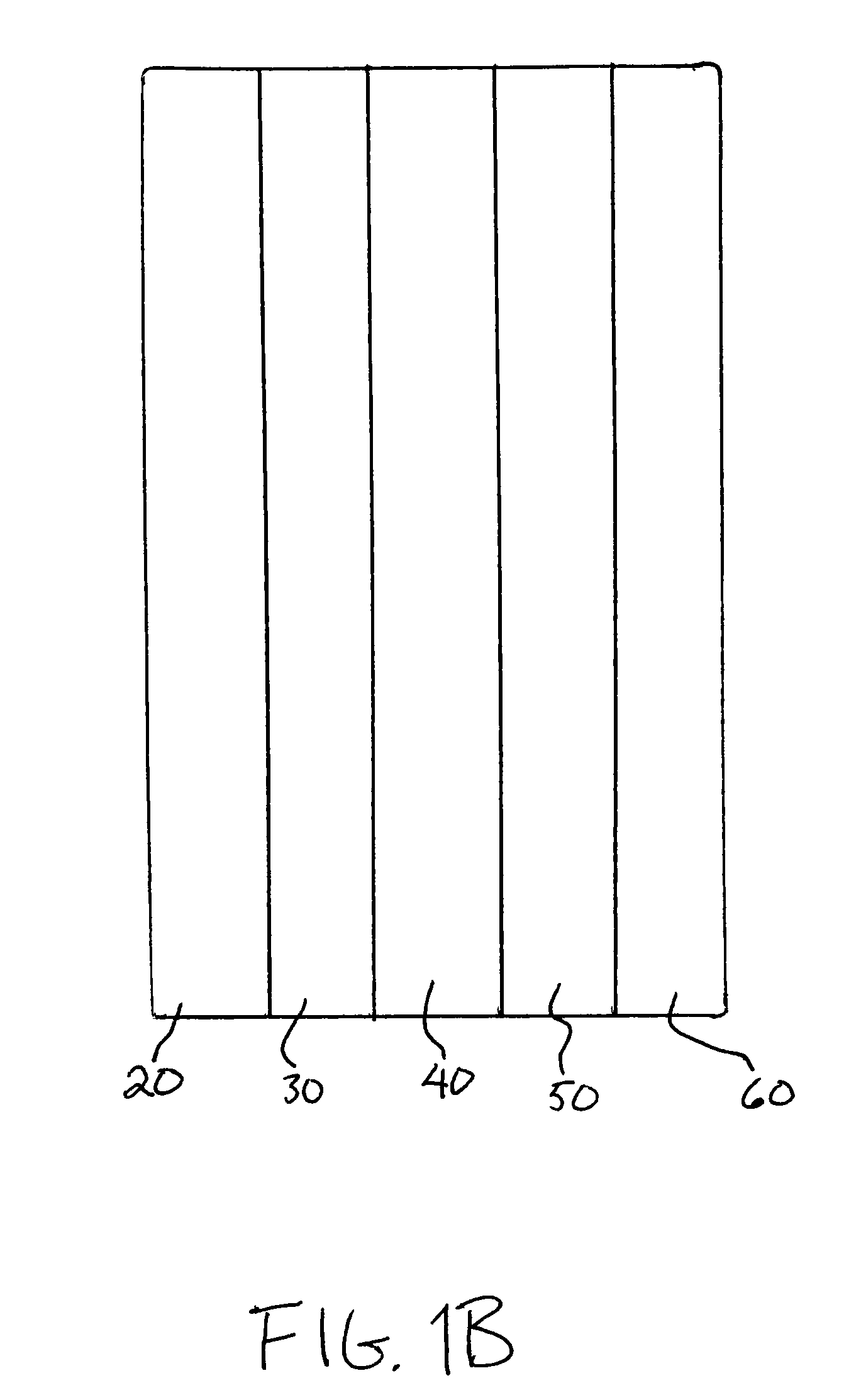Reflective Polarized Lenses With High Transmission
a technology of polarized lenses and reflectors, applied in the direction of polarizing elements, instruments, other chemical processes, etc., to achieve the effect of high polarization efficiency and high luminous transmission
- Summary
- Abstract
- Description
- Claims
- Application Information
AI Technical Summary
Benefits of technology
Problems solved by technology
Method used
Image
Examples
example 1
[0034]A comparison was conducted using various combinations of reflective polarizers, high-transmission, low-efficiency polarizers and regular polymer polarizers. The high-transmission, low-efficiency polarizer G35 was pre-laminated in two stretched polycarbonate films. G50 was a dyed polyvinyl alcohol, PVA, film. The RPZ+G50 and RPZ+35 laminates were obtained by laminating G35 or G50 film to reflective polarizers with the polarizing axes of each polarizer aligned to the one another. The results of the comparison are provided in Table 2.
TABLE 2Back ReflectancePolarizationLaminateTransmission (%)(Total)EfficiencyPZ (regular)17.555.2399.9RPZ47.151.2493.6G3535.116.197.5RPZ + G3532.456.5299.9G5049.535.9783.6RPZ + G5040.858.0899.7
[0035]It is noted that the high back reflection of the reflective polarizer when used alone, 51.24 percent was reduced to level of a back reflection normal for a regular polymer polarizing film, approximately 5 percent, when the reflective polarizer was combined...
example 2
[0036]A second comparison was conducted using a high-transmission polarizer alone and in combination with a reflective polarizer. The high-transmission polarizer H18 is a HEV Brown polarizer with 18 percent luminous transmission. The RPZ+H18 laminate was constructed by laminating the H18 film to a reflective polarizer with the polarizing axes of each polarizer aligned to one another. The results of the comparison are provided in Table 3.
TABLE 3Back ReflectancePolarizationLaminateTransmission (%)(Total)EfficiencyH18185.5197.1RPZ + H1817.125.6698.7
example 3
[0037]A third comparison was conducted using a neutral density filter alone and in combination with a reflective polarizer. The neutral density filter used was ND30, a Chromafilter from obtained from Performance Coatings International. ND30 has a luminous transmission of approximately 30 percent. The test laminate RPZ+ND30 is obtained by laminating ND30 film to a reflective polarizer. The results of the comparison are provided in Table 4.
TABLE 4Back ReflectancePolarizationLaminateTransmission (%)(Total)EfficiencyND3027.24.690RPZ + ND3014.297.9496.4
[0038]It is seen that even though the utilization of a neutral density filter is able to reduce the reflection from a RPZ from 51% to ˜8%, similar to the utilization of a G50 polarizer. However, the luminous transmission has also been reduced from 47% to a mere 14% as compared to 40% when a G50 polarizer has been used.
PUM
| Property | Measurement | Unit |
|---|---|---|
| thickness | aaaaa | aaaaa |
| diameter | aaaaa | aaaaa |
| melting temperature | aaaaa | aaaaa |
Abstract
Description
Claims
Application Information
 Login to View More
Login to View More - R&D
- Intellectual Property
- Life Sciences
- Materials
- Tech Scout
- Unparalleled Data Quality
- Higher Quality Content
- 60% Fewer Hallucinations
Browse by: Latest US Patents, China's latest patents, Technical Efficacy Thesaurus, Application Domain, Technology Topic, Popular Technical Reports.
© 2025 PatSnap. All rights reserved.Legal|Privacy policy|Modern Slavery Act Transparency Statement|Sitemap|About US| Contact US: help@patsnap.com



